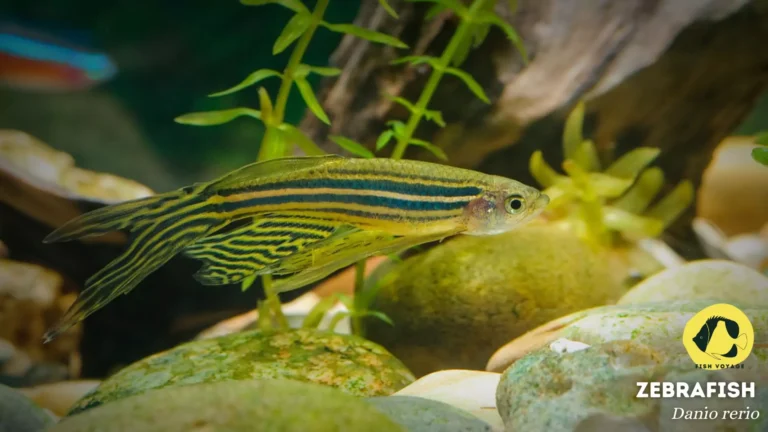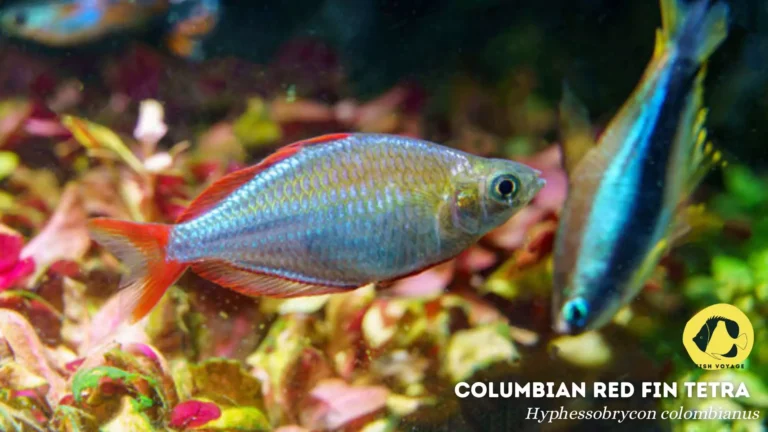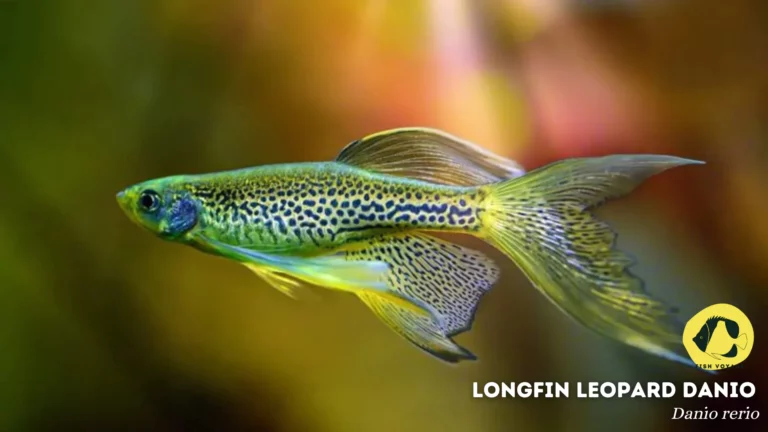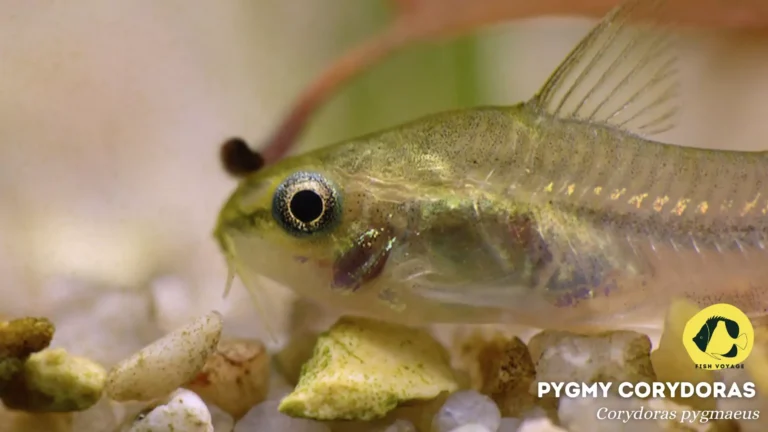List of Top Hardy Fish For Your Planted Tank
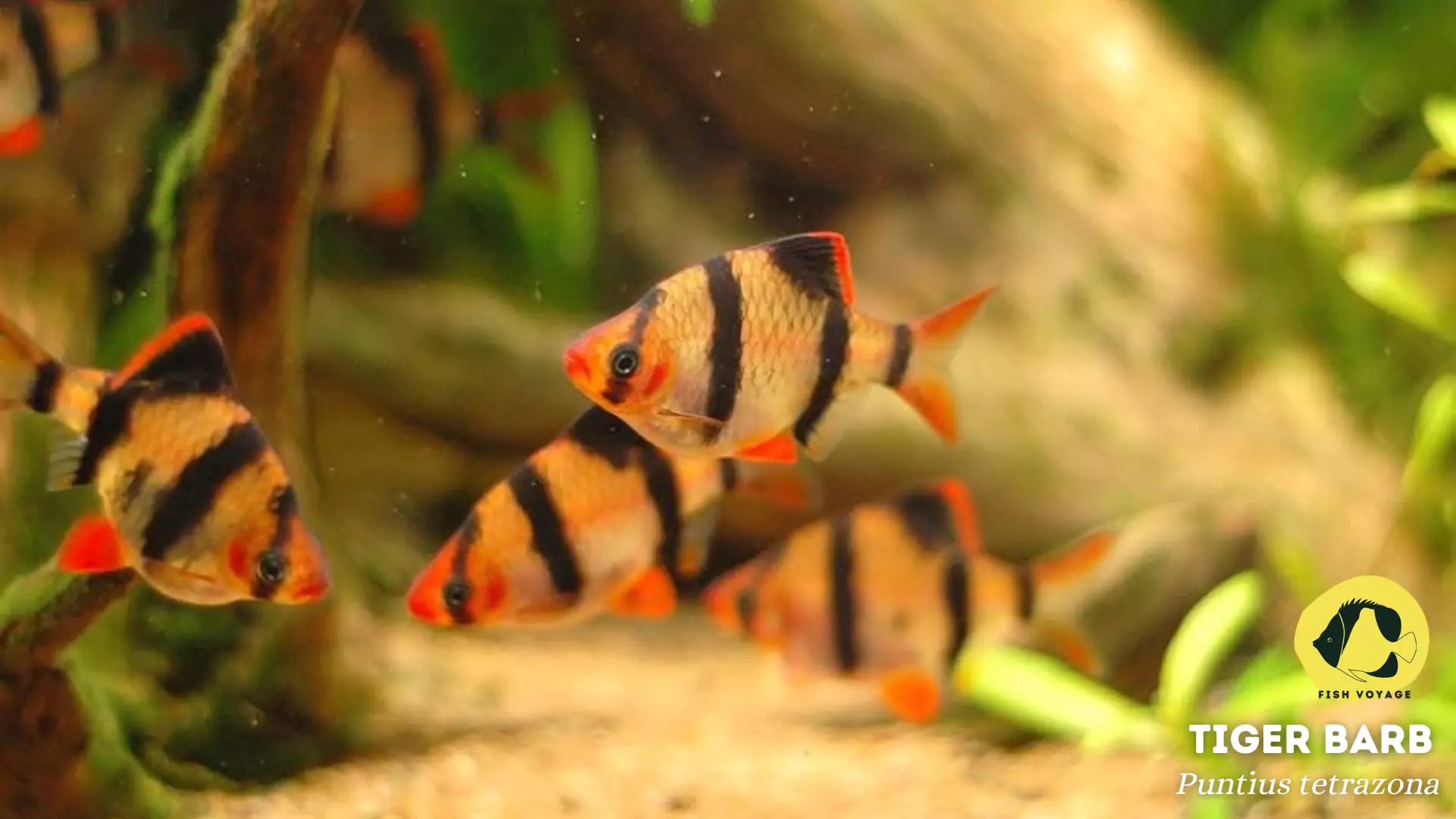
In the intricate world of aquarium keeping, the choice of fish species plays a pivotal role in the overall health and longevity of a planted tank. Opting for hardy fish is paramount as it ensures a harmonious coexistence with aquatic plants, fostering a symbiotic relationship that contributes to the tank’s stability. Hardy fish demonstrate adaptability and resilience, thriving in various water conditions while complementing the delicate balance of a planted ecosystem. This strategic pairing not only enhances the aesthetic appeal of the aquarium but also reduces the challenges associated with maintenance, making it an ideal choice for both novice and experienced enthusiasts alike. As we delve into the realm of hardy fish for planted tanks, this article aims to unravel the intricacies of their compatibility, shedding light on the benefits of cultivating a resilient and flourishing aquatic environment.
Characteristics of Hardy Fish
Versatile Adaptability
Hardy fish are characterized by their remarkable adaptability to diverse environmental conditions within an aquarium setting. This adaptability ensures their ability to thrive in a wide range of water parameters, making them resilient to fluctuations.
Resilient Nature
Resilience is a hallmark trait of hardy fish. These species demonstrate a robust ability to withstand variations in water quality, temperature, and other potential stressors, reducing the likelihood of health issues and enhancing their overall longevity.
Tolerance to Water Conditions
An essential attribute of hardy fish is their high tolerance to fluctuations in water conditions. Whether it be variations in pH levels or minor changes in temperature, these fish exhibit a capacity to maintain well-being despite such shifts, contributing to a more stable aquatic ecosystem.
Compatibility with Tank Mates
Beyond their individual hardiness, these fish often display amicable behaviors, making them compatible with a variety of tank mates. This social adaptability enhances the overall dynamics of the aquarium community, fostering a cooperative and thriving environment.
Resistance to Diseases
Hardy fish are known for their resistance to common aquarium diseases. This characteristic not only minimizes the risk of infections but also reduces the need for intensive medical interventions, resulting in a more straightforward and manageable care routine.
In essence, the term “hardy fish” encapsulates a suite of traits that collectively contribute to their suitability for aquariums. Their adaptability, resilience, tolerance to water conditions, compatibility with tank mates, and resistance to diseases make them an excellent choice for both novice and experienced aquarium enthusiasts seeking a robust and sustainable aquatic setup.
Benefits of Hardy Fish in Planted Tanks
Enhanced Stability of the Aquarium Ecosystem
The inclusion of hardy fish in a planted tank contributes significantly to the overall stability of the aquatic environment. Their adaptability and resilience create a balanced ecosystem, reducing the susceptibility of the tank to sudden changes in water conditions. This stability, in turn, fosters optimal conditions for both fish and plants to thrive harmoniously.
Lower Maintenance Requirements for Both Fish and Plants
Hardy fish play a pivotal role in streamlining the maintenance demands of a planted tank. Their ability to withstand fluctuations in water parameters means that meticulous adjustments and interventions are less frequently required. This not only eases the workload for aquarium enthusiasts but also promotes a more relaxed and enjoyable hobby, allowing focus on the aesthetic aspects of the tank rather than constant troubleshooting.
Increased Likelihood of Successful Aquarium Setup for Beginners
For those venturing into the world of aquarium keeping, opting for hardy fish significantly increases the likelihood of a successful and fulfilling experience. Their forgiving nature towards potential mistakes or learning curves provides beginners with a buffer, making the initial stages of tank setup and maintenance more forgiving. This positive experience encourages continued engagement in the hobby, fostering a sense of accomplishment and enthusiasm.
In summary, the incorporation of hardy fish in planted tanks not only ensures a stable and thriving ecosystem but also lightens the burden of maintenance for both aquatic flora and fauna. This strategic choice not only benefits experienced hobbyists seeking a low-maintenance setup but also serves as a welcoming entry point for beginners, laying the foundation for a rewarding and enduring aquarium-keeping journey.
Popular Hardy Fish Species for Planted Tanks
Guppies
Features
- Vibrant Colors and Patterns: Guppies are renowned for their dazzling array of colors and intricate patterns, adding visual vibrancy to planted tanks.
- Adaptability: Guppies thrive in various water conditions, showcasing adaptability that suits the diverse needs of planted aquariums.
- Small Size: Their modest size makes them well-suited for smaller planted tanks, ensuring a proportional and balanced environment.
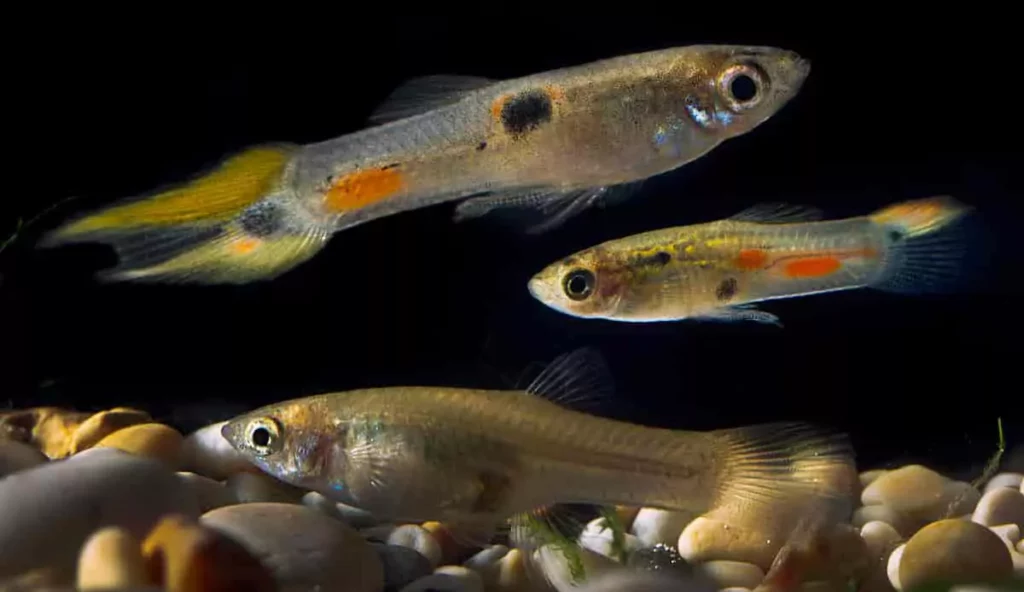
Guidelines for Incorporation
- Maintain a water temperature between 72-82°F (22-28°C) to accommodate the guppies’ preferences.
- Integrate ample vegetation and hiding spots, as guppies appreciate places to seek refuge and explore.
Swordtails
Features
- Distinctive Appearance: Swordtails are known for their elongated, sword-like tails, adding a unique visual element to planted tanks.
- Community-Friendly: They exhibit peaceful behavior, making them compatible with a variety of tank mates, including other hardy fish and community species.
- Surface and Mid-Level Swimmers: Swordtails tend to swim in the middle and upper regions of the tank, complementing the planted environment.
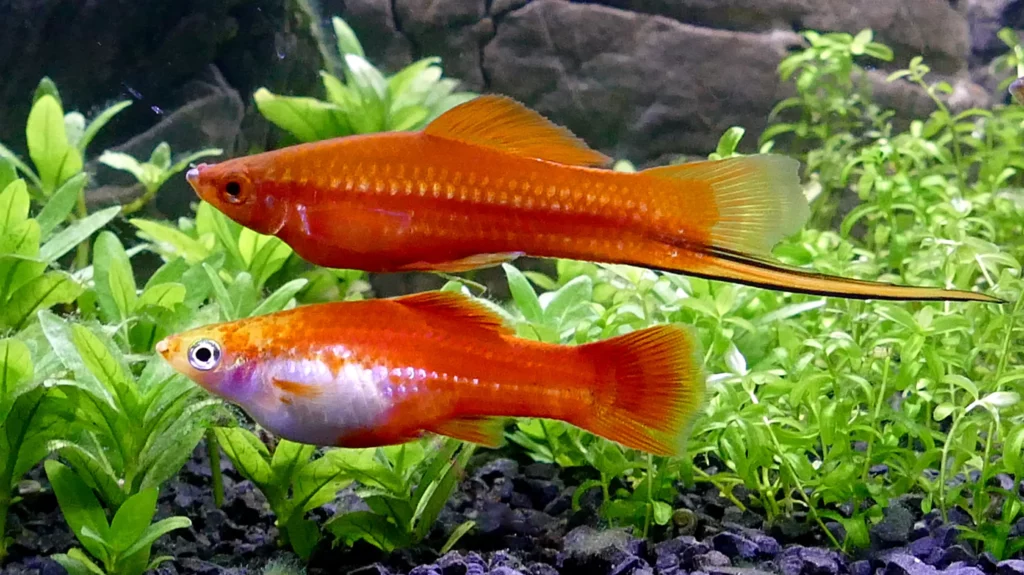
Guidelines for Incorporation
- Provide sufficient swimming space, considering the swordtails’ active nature.
- Keep swordtails in groups to encourage natural behavior and reduce stress.
Tetras (e.g., Neon Tetras)
Features
- Schooling Behavior: Tetras, including Neon Tetras, exhibit schooling behavior, creating a captivating visual display in planted tanks.
- Peaceful Nature: They are generally non-aggressive, contributing to a harmonious community within the aquarium.
- Compatibility with Plants: Tetras coexist well with aquatic plants, showcasing minimal interference with foliage.

Guidelines for Incorporation
- Keep tetras in groups of at least six to satisfy their schooling instincts.
- Maintain slightly acidic to neutral water conditions, aligning with their preference for softer water.
Corydoras Catfish
Features
- Bottom-Dwelling Nature: Corydoras are excellent bottom-dwellers, aiding in substrate maintenance and promoting a balanced ecosystem.
- Peaceful and Sociable: They are peaceful and sociable, making them suitable companions for a variety of tank mates.
- Algae Control: Corydoras contribute to algae control by foraging on the tank’s bottom, helping to maintain plant health.
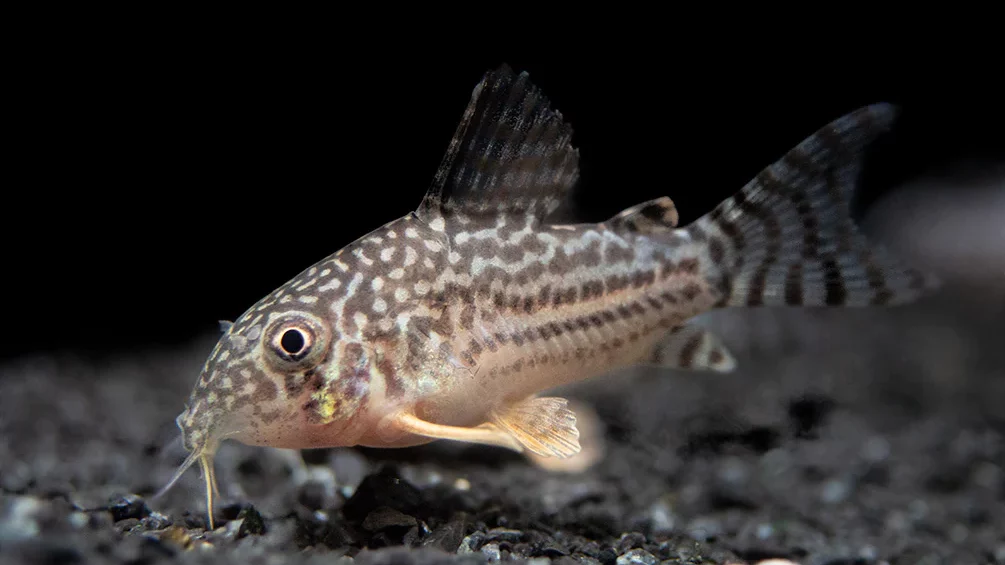
Guidelines for Incorporation
- Choose a soft substrate to protect their barbels and provide a comfortable environment.
- Keep Corydoras in groups to ensure they feel secure and exhibit natural behaviors.
Platies
Features
- Color Varieties: Platies come in a variety of colors, contributing to the aesthetic appeal of planted tanks.
- Peaceful Temperament: They have a calm temperament, making them suitable for community setups.
- Livebearer Reproduction: Platies are livebearers, which adds an interesting dimension to the tank as they give birth to live fry.
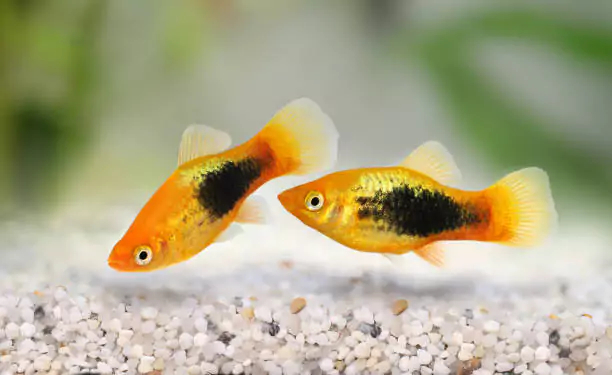
Guidelines for Incorporation
- Include plants that offer cover for fry, as platies may breed readily in a well-maintained environment.
- Provide a balanced diet, as platies can benefit from a mix of quality flakes and occasional live or frozen foods.
Danios
Features
- Active Swimmers: Danios are known for their energetic swimming behavior, adding liveliness to planted tanks.
- Low-Maintenance: They are hardy and low-maintenance, making them suitable for beginners.
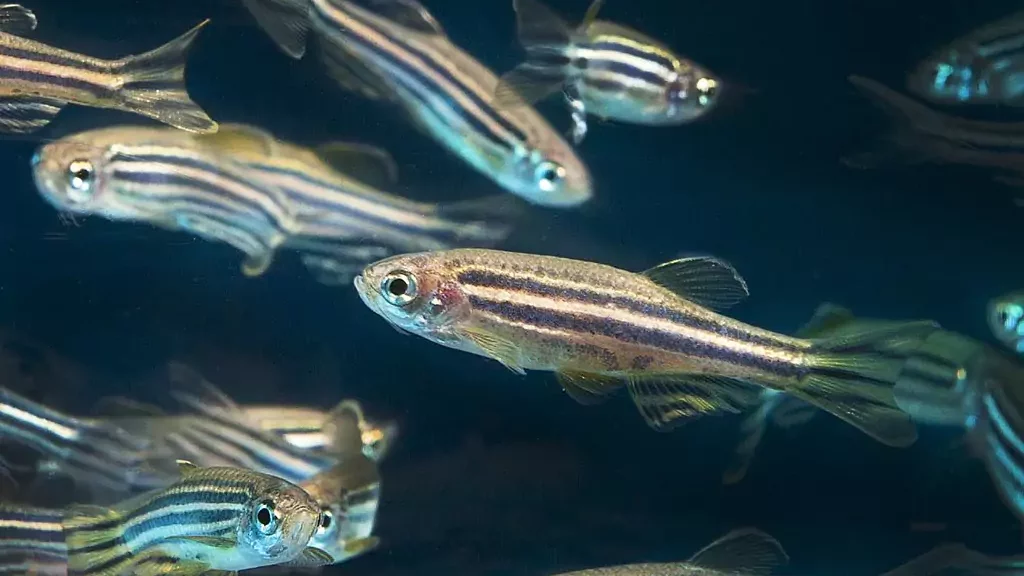
Guidelines for Incorporation
- Keep them in groups of at least five to satisfy their schooling instinct.
- Provide a well-filtered tank with a temperature range of 64-74°F (18-23°C).
- Include open spaces for their energetic swimming habits.
Rasboras
Features
- Schooling Behavior: Rasboras exhibit schooling behavior, creating a visually appealing dynamic in planted tanks.
- Peaceful Nature: They are peaceful and coexist well with various tank mates.

Guidelines for Incorporation
- Maintain a slightly acidic to neutral pH (6.0-7.0) and a temperature range of 72-77°F (22-25°C).
- Provide a mix of floating and submerged plants for a natural habitat.
Mollies
Features
- Variety of Colors: Mollies come in various colors, offering diversity to the visual aesthetics of planted tanks.
- Brackish Water Tolerance: Some species tolerate brackish water, providing versatility in tank setups.
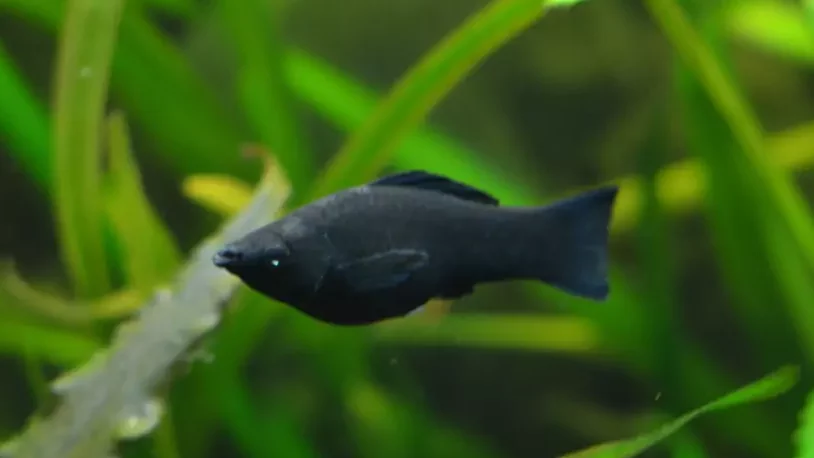
Guidelines for Incorporation
- Keep them in a temperature range of 75-82°F (24-28°C).
- Provide a mix of vegetable-based and protein-rich foods for a balanced diet.
- Ensure a well-filtered tank with regular water changes.
Kuhli Loaches
Features
- Unique Appearance: Kuhli loaches have a distinctive eel-like appearance, adding intrigue to the bottom levels of the tank.
- Nocturnal Behavior: They are primarily nocturnal, making them an interesting addition for enthusiasts seeking diverse activity.

Guidelines for Incorporation
- Offer hiding spots like caves and dense vegetation.
- Maintain a temperature range of 75-86°F (24-30°C) and soft substrate.
- Feed them a diet of sinking pellets, live, or frozen foods.
White Cloud Mountain Minnows
Features
- Coldwater Tolerance: These minnows are tolerant of slightly cooler temperatures, making them suitable for unheated planted tanks.
- Peaceful Schooling: They exhibit peaceful schooling behavior, enhancing the communal aspect of the aquarium.
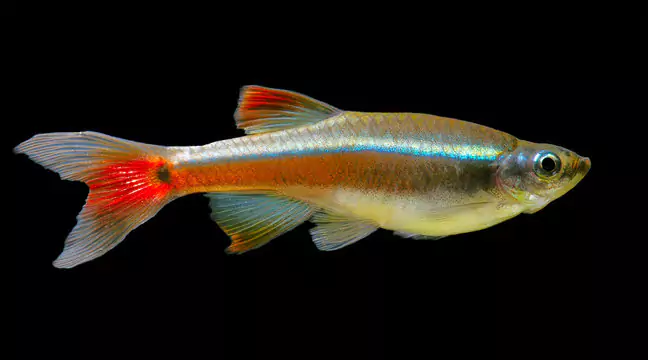
Guidelines for Incorporation
- Keep them in cooler temperatures, ideally between 64-72°F (18-22°C).
- Provide a well-aerated tank with a mix of floating and submerged plants.
- Ensure a peaceful community environment by avoiding aggressive tank mates.
Incorporating a diverse range of these hardy fish species into a planted tank not only elevates the visual appeal but also fosters a balanced and resilient aquatic ecosystem. Following specific guidelines for each species ensures their well-being and contributes to a successful and enjoyable aquarium experience.
Tips for Maintaining a Healthy Planted Tank with Hardy Fish
Proper Water Parameters and Temperature Control
- Maintain Consistent Parameters: Regularly check and maintain stable water parameters such as pH, ammonia, nitrites, and nitrates to create an environment conducive to the well-being of both hardy fish and plants.
- Temperature Precision: Keep the water temperature within the ideal range for the selected hardy fish species, ensuring their comfort and promoting healthy metabolic functions.
Providing a Balanced Diet for Both Fish and Plants
- Diversify Fish Diet: Offer a well-rounded diet that includes high-quality flakes, pellets, and occasional live or frozen foods to meet the nutritional needs of hardy fish.
- Supplement Plant Nutrition: Utilize fertilizers and substrates rich in essential nutrients to support the growth of aquatic plants, promoting a flourishing and visually appealing tank.
Regular Monitoring and Maintenance Routine
- Water Quality Checks: Conduct routine water tests to monitor and address any fluctuations in water quality promptly, preventing potential stress or health issues among the fish.
- Scheduled Water Changes: Implement a regular water change schedule to remove accumulated debris, maintain water clarity, and promote a healthy aquatic environment.
- Prune and Trim Plants: Regularly trim and prune aquatic plants to prevent overgrowth, maintain aesthetic balance, and ensure that the plants receive adequate light and nutrients.
Maintaining a thriving planted tank with hardy fish involves a meticulous approach to water quality, nutrition, and routine care. By adhering to these tips, aquarium enthusiasts can foster a balanced ecosystem that not only supports the well-being of their resilient fish but also cultivates lush, vibrant plant life. Consistent attention to these factors contributes to the long-term success and visual appeal of the planted aquarium, creating a captivating and harmonious aquatic haven.
Common Challenges and Troubleshooting
Identifying and Addressing Common Issues
- Algae Overgrowth: Combat excessive algae by maintaining a proper balance of light, nutrients, and carbon dioxide in the aquarium. Introduce algae-eating fish or invertebrates for natural control.
- Plant Deficiencies: Identify nutrient deficiencies in plants by observing leaf color and growth patterns. Address deficiencies through targeted fertilization or substrate enhancements, ensuring optimal plant health.
Troubleshooting Tips for Maintaining Water Quality
- Ammonia and Nitrite Spikes: Regularly test for ammonia and nitrite levels, particularly during the initial setup phase. Address spikes by adjusting feeding habits, increasing water changes, and ensuring an established biological filter.
- pH Fluctuations: Stabilize pH levels by incorporating buffering substrates or rocks that naturally regulate acidity. Gradual adjustments are key to avoiding stress on both fish and plants.
Preventing Diseases
- Quarantine New Additions: Prior to introducing new fish to the planted tank, quarantine them to prevent the potential spread of diseases. This precautionary measure protects the existing fish community.
- Observation and Early Intervention: Regularly observe fish behavior and appearance. Any signs of lethargy, abnormal swimming, or discoloration should be promptly addressed with targeted treatments to prevent the spread of diseases.
Maintaining Optimal Lighting Conditions
- Balanced Light Duration: Adjust the duration of light exposure to simulate natural day-night cycles. Consistent periods of darkness prevent excessive algae growth and provide resting time for fish.
- Appropriate Light Spectrum: Choose lighting with the appropriate spectrum for both plant growth and fish well-being. LED lights with customizable settings offer flexibility for different aquarium setups.
Addressing Substrate Issues
- Preventing Compaction: Regularly aerate the substrate to prevent compaction, allowing for proper root growth and nutrient absorption by plants.
- Choosing Suitable Substrate: Select a substrate that caters to the specific needs of plants and fish. In planted tanks, a nutrient-rich substrate can promote healthy root development and overall plant vitality.
Navigating challenges in planted tanks with hardy fish requires a proactive and informed approach. By identifying common issues, maintaining water quality, preventing diseases, optimizing lighting conditions, and addressing substrate concerns, aquarium enthusiasts can troubleshoot effectively and ensure the long-term success of their vibrant aquatic ecosystems. This careful attention to detail contributes to a resilient and visually stunning planted tank, providing both enthusiasts and their aquatic inhabitants with a flourishing environment.
Conclusion
In conclusion, the deliberate selection of hardy fish for planted tanks yields a myriad of advantages, solidifying their role as invaluable contributors to the thriving ecosystem of aquariums. The symbiotic relationship between these resilient aquatic companions and lush plant life offers a harmonious blend of aesthetics and functionality, creating a captivating underwater haven for both enthusiasts and their finned friends.
Recap of the Advantages
- Stability and Resilience: Hardy fish bring stability to the aquarium ecosystem, demonstrating adaptability, resilience, and a remarkable ability to withstand fluctuations in water conditions.
- Reduced Maintenance: The presence of these robust species translates to lower maintenance demands, easing the workload for aquarium enthusiasts and allowing them to focus on the aesthetic aspects of their planted tanks.
- Beginner-Friendly: Hardy fish significantly increase the likelihood of success for beginners in the intricate world of aquarium keeping. Their forgiving nature offers a buffer for learning curves, fostering a positive entry into the captivating hobby.
Encouragement for Hobbyists
As we reflect on the advantages of incorporating hardy fish into planted tanks, let this be an encouragement for enthusiasts to delve deeper into the fascinating realm of aquarium keeping. The journey is not merely about creating a visually stunning aquatic landscape; it is about fostering a vibrant and resilient ecosystem that brings joy and satisfaction to both the hobbyist and the aquatic inhabitants.
By embracing the benefits of hardy fish, aquarium enthusiasts have the opportunity to cultivate an environment that not only showcases the beauty of underwater life but also stands as a testament to the delicate balance achievable within a carefully curated aquatic habitat. Explore, learn, and relish the rewards of a flourishing planted tank, where hardy fish play a pivotal role in creating a sustainable and captivating underwater sanctuary.
In the dynamic tapestry of aquarium keeping, the inclusion of hardy fish ensures that each ripple in the water tells a story of resilience, adaptability, and the shared journey between humans and the aquatic wonders they nurture. May your planted tank thrive, bringing fulfillment and serenity to your aquatic pursuits.
Additional Resources
For enthusiasts seeking a deeper understanding of specific fish species, optimal tank setups, and effective maintenance practices, the following external resources are recommended. These reputable forums and books serve as valuable references, providing a wealth of knowledge and insights into the intricate world of aquarium keeping.
Reputable Forums
- Fishlore Community: A thriving online community with a vast repository of user-generated content and expert advice. Engage with experienced hobbyists to gain insights into specific fish species, their behaviors, and successful tank setups.
- The Planted Tank Forum: A dedicated forum for planted tank enthusiasts. Explore discussions on aquatic plants, substrate choices, and effective maintenance routines. Connect with a community passionate about creating lush and vibrant planted aquariums.
- Tropical Fish Forums: A comprehensive forum covering a wide array of fish species. Dive into specific threads to learn about the care requirements, compatibility, and experiences of fellow hobbyists with various hardy fish for planted tanks.
Reputable Books
- Aquarium Plants by Christel Kasselmann: An authoritative guide on aquatic plants, offering in-depth insights into their biology, propagation, and optimal conditions for growth. This book serves as an invaluable resource for enthusiasts looking to enhance the plant life in their aquariums.
- The Simple Guide to Freshwater Aquariums by David E. Boruchowitz: A beginner-friendly guide covering various aspects of freshwater aquarium keeping. Explore chapters on choosing hardy fish, setting up a planted tank, and maintaining water quality for a successful and enjoyable aquarium experience.
- Encyclopedia of Aquarium & Pond Fish by David Alderton: A comprehensive reference that profiles a vast array of fish species suitable for aquariums and ponds. Delve into detailed species descriptions, habitat information, and practical tips for creating a harmonious aquatic environment.
These external resources are curated to provide enthusiasts with reliable information, fostering a deeper understanding of their chosen fish species and promoting successful aquarium setups. Whether you are a novice seeking foundational knowledge or an experienced hobbyist looking to refine your practices, these forums and books offer a wealth of expertise to enrich your journey in the world of planted tanks.
Frequently Asked Questions (FAQs)
1. What are some recommended hardy fish species for planted tanks?
Guppies, Swordtails, Tetras (e.g., Neon Tetras), Corydoras Catfish, and Platies are excellent choices for their adaptability, resilience, and compatibility with planted environments.
2. How can I maintain stable water parameters in a planted tank with hardy fish?
Regularly monitor pH, ammonia, nitrite, and nitrate levels. Ensure consistent water temperature within the preferred range of the chosen hardy fish species, and perform routine water changes to promote a stable aquatic environment.
3. What should I consider when selecting a substrate for my planted tank with hardy fish?
Choose a nutrient-rich substrate to support plant growth. Consider the substrate’s texture to accommodate bottom-dwelling species like Corydoras Catfish, ensuring a comfortable and conducive environment.
4. How do I prevent and control algae in a planted tank with hardy fish?
Maintain a balanced light duration, provide algae-eating fish or invertebrates, and ensure proper nutrient levels. Regularly clean the tank, prune overgrown plants, and avoid overfeeding to prevent algae overgrowth.
5. Can hardy fish coexist with more delicate or sensitive plant species in a planted tank?
Yes, many hardy fish are compatible with a variety of plant species. However, it’s essential to consider the specific requirements of both the fish and the plants to create a balanced and thriving planted ecosystem. Start with species known for their adaptability and observe compatibility over time.

